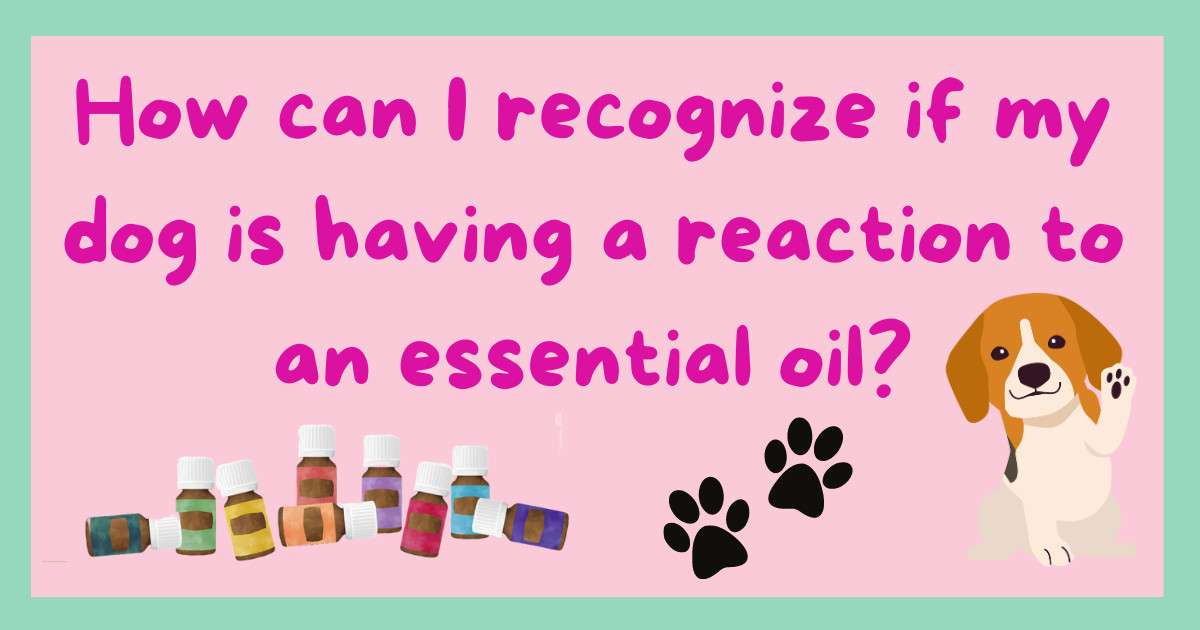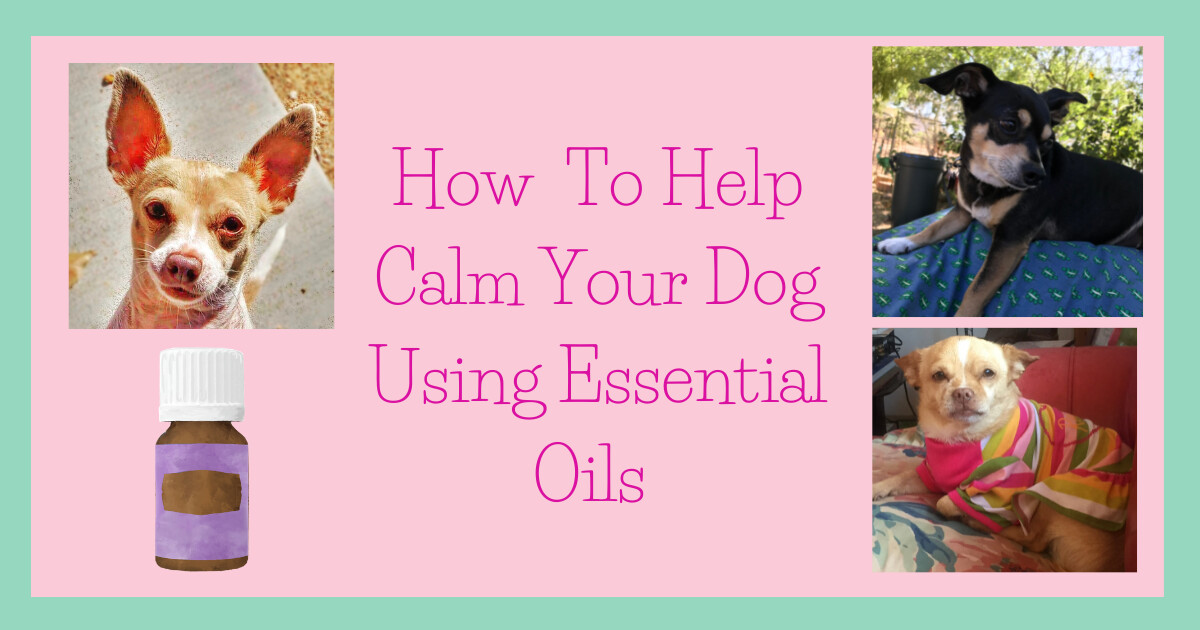
Hey there, fellow dog moms and wellness enthusiasts! So, today I've had a very good question come in from a gal who's just started diffusing essential oils and noticed her dog started to cough. She was wondering if it could be related, and that's a great question! So, this week's blog is dedicated to what to look for when using essential oils with your dog to make sure it's all going okay.
This discussion is not meant to deter essential oil use in dogs; in fact, I've been incorporating essential oils into my own dogs' wellness routines for over 8 years now. Take BB, for example, my infamous 5-pound Chihuahua – he's been benefiting from essential oils alongside me every step of the way. Essential oils are undeniably a valuable tool in the wellness toolbox for our furry companions.
When using premium and pure unadulterated essential oils properly, the likelihood of adverse reactions in dogs is significantly reduced. In fact, when sourced from reputable suppliers and applied with care, these high-quality oils can offer a myriad of benefits to our furry companions. Essential oils have been celebrated for their natural wellness properties for centuries, and when used responsibly, they can be a valuable tool in supporting our dogs' overall well-being. From soothing skin and supporting healthy fur, to promoting relaxation and emotional balance, the wellness potential of essential oils is vast.
However, it's crucial to recognize that every dog is unique, and not all essential oils are created equal. That's why my motto when using essential oils with your dog is simple: go low, go slow, and observe. This blog is dedicated to helping you do just that – observing and understanding how essential oils can best serve your dog's health and happiness.
First off, let's talk about why essential oils might cause a reaction in dogs.
Essential oils are potent plant extracts derived from various aromatic plants and herbs. While these oils offer a plethora of wellness benefits for humans and animals alike, it's essential to recognize that dogs, like humans, can have individual sensitivities and physiological differences that may influence their response to these concentrated compounds.
One primary reason why essential oils might cause a reaction in dogs is their unique physiology. Dogs have a highly sensitive sense of smell and a different metabolic rate compared to humans. Their bodies metabolize substances at varying rates, and what may be safe for us could potentially overwhelm their systems.
Additionally, certain chemical components present in essential oils could have the potential to trigger reactions in sensitive individuals. Common constituents found in many essential oils may cause different responses in some dogs.
Moreover, the method of application plays a significant role in how dogs interact with essential oils. Inhalation, topical application, and ingestion are the primary routes of exposure. All three methods can be safe and benefit your dog. To read more about the three methods of application, click HERE.
If you are just starting out, inhalation is the easiest and safest method. Diffusing essential oils with a diffuser is a fabulous way for you and your dog to enjoy the benefits of essential oils. Using a water based ultrasonic diffuser dilutes the essential oil. Click HERE for my in depth blog about diffusing essential oils with your dog.
Topical application is another great way to use essential oils with dogs. Diluting the essential oil with a carrier oil like fractionated coconut oil minimizes any chance of a skin reaction. Click HERE to read more about carrier oils for topical use. If applied undiluted or in high concentrations, you could see skin irritation or sensitization. If this occurs, simply add more carrier oil, this will further dilute the essential oils and slow the absorption rate to a level your dog can tolerate.
Ingesting essential oils can provide additional benefits, but it's important to exercise mindfulness when considering this practice. Ensure the quality and suitability of the essential oil, understand your reasons for internal use, and consider your dog's health and condition. Only use essential oils labeled for ingestion, and always read your labels carefully. Working with a holistic veterinarian trained in essential oil use can provide valuable guidance and support for this method.
Interestingly, many dog foods on the market today contain essential oils as natural preservatives, meaning your dog may already be ingesting them to some extent. While ingestion remains a somewhat controversial topic in the essential oils world, it's essential to understand that you can experience the benefits of essential oils through various methods. If you're uncomfortable with ingesting oils, simply opt for alternative methods. Remember, the skin is our largest organ, and what we apply topically gets absorbed into the body. Likewise, inhaling essential oils allows absorption through the lungs. While ingestion can be a valuable tool, it's not a requirement for reaping the benefits of essential oils.
It's also essential to consider the quality and purity of the essential oils being used. Low-quality oils may contain contaminants or adulterants that can exacerbate adverse reactions in dogs. Opting for high-quality, premium-grade oils from reputable sources can minimize the risk of adverse effects.
Now, you might be wondering, how can I tell if my dog is having a reaction to an essential oil? Here are some signs to watch out for:
- Skin Irritation: Keep an eye out for redness, itching, or irritation on your dog's skin after applying or diffusing essential oils. This could manifest as rashes, hives, or hot spots. Pay close attention to areas where the oil was applied.
- Excessive Scratching or Licking: If your dog starts scratching or licking themselves more than usual, it could indicate a reaction. Persistent scratching, especially around the ears, face, or paws, may signal discomfort or irritation.
- Respiratory Issues: Watch for abnormal breathing signs, such as coughing, wheezing, sneezing, or even heavy breathing. Dogs with sensitive respiratory systems may be overwhelmed with airborne essential oil particles, particularly in poorly ventilated spaces.
- Digestive Upset: Keep an eye on your pup's digestive health. Symptoms like vomiting, diarrhea, or excessive drooling could indicate that their stomach isn't tolerating certain essential oils well.
- Behavioral Changes: Pay attention to any unusual behavior exhibited by your dog after exposure to essential oils. This could include lethargy, restlessness, agitation, stupor, or changes in appetite. Dogs may show signs of discomfort or distress through their behavior.
- Swelling or Inflammation: Be vigilant for any swelling or inflammation, particularly around the face, muzzle, or eyes. These are common areas where reactions may manifest.
Alright, now that we've covered the signs of an adverse reaction, let's talk about what to do if you suspect your dog is experiencing one:
- Stop Use Immediately: If you suspect your dog is reacting to essential oils, stop using the essential oil. If you were diffusing the oil, ensure proper ventilation and remove your dog from the area.
- Dilute Further: If the oil was applied topically, further dilute it with additional carrier oil to lessen its potency and slow down absorption, making it better tolerated by the body. Since essential oils do not mix with water, attempting to rinse the oil off can actually drive it further into the skin. Instead, remember that essential oils are lipid-loving (attracted to fat), so adding more carrier oil will effectively bind with the essential oil.
- Evaluate: Delve into the specific essential oil you used and its application method. Often, reactions stem from issues related to quality or excessive usage. If symptoms persist despite discontinuing oil use and additional dilution, consult a veterinarian promptly. Your vet can offer expert guidance, recommend appropriate treatments, and provide supportive care to alleviate your dog's symptoms effectively.
- Monitor Your Dog: Keep a close eye on your dog and monitor their condition closely. Note any changes in their symptoms and behavior, and be prepared to provide updates to your vet if necessary.
- Prevention is Key: Moving forward, take a look at the essential oil you were using, the quality, and how you were using it. You might have just used too much, you might have used an inferior oil with contaminants, or your dog may truly be sensitive to that essential oil. There are over 300 plants that are distilled for essential oils on the market and many have similar benefits, so moving forward consider consulting with a holistic veterinarian trained in the use of essential oils or canine aromatherapist for guidance to use the right essential oil for your dog.
When encountering issues with essential oils, it's crucial to recognize that the root cause is often linked to the quality of the oil and how it was used. High-quality, pure essential oils sourced from reputable suppliers undergo rigorous testing and adhere to strict quality standards, ensuring that they are free from contaminants, adulterants, and harmful chemicals. However, lower-quality oils and those that have been improperly used pose a greater risk of adverse reactions in dogs.
Additionally, the method of application plays a significant role in determining the outcome. Diluting oils appropriately, using them in well-ventilated spaces, and respecting each dog's individual sensitivities are essential practices to minimize the likelihood of problems. By prioritizing the use of premium oils and employing proper techniques, we can provide our furry friends with the safest and most beneficial experience when incorporating essential oils into their wellness regimen.
Ready to take your knowledge of essential oils and your dog's well-being to the next level? Join me in my Oily Dog Intro course, where we'll take a deep dive into safely using essential oils with your furry companion. Whether you're new to essential oils or looking to expand your expertise, this course is designed to empower you with the knowledge and confidence to support your dog's health naturally. Don't miss out – sign up today and embark on a journey to holistic wellness for you and your canine companion! Click HERE!










0 Comments